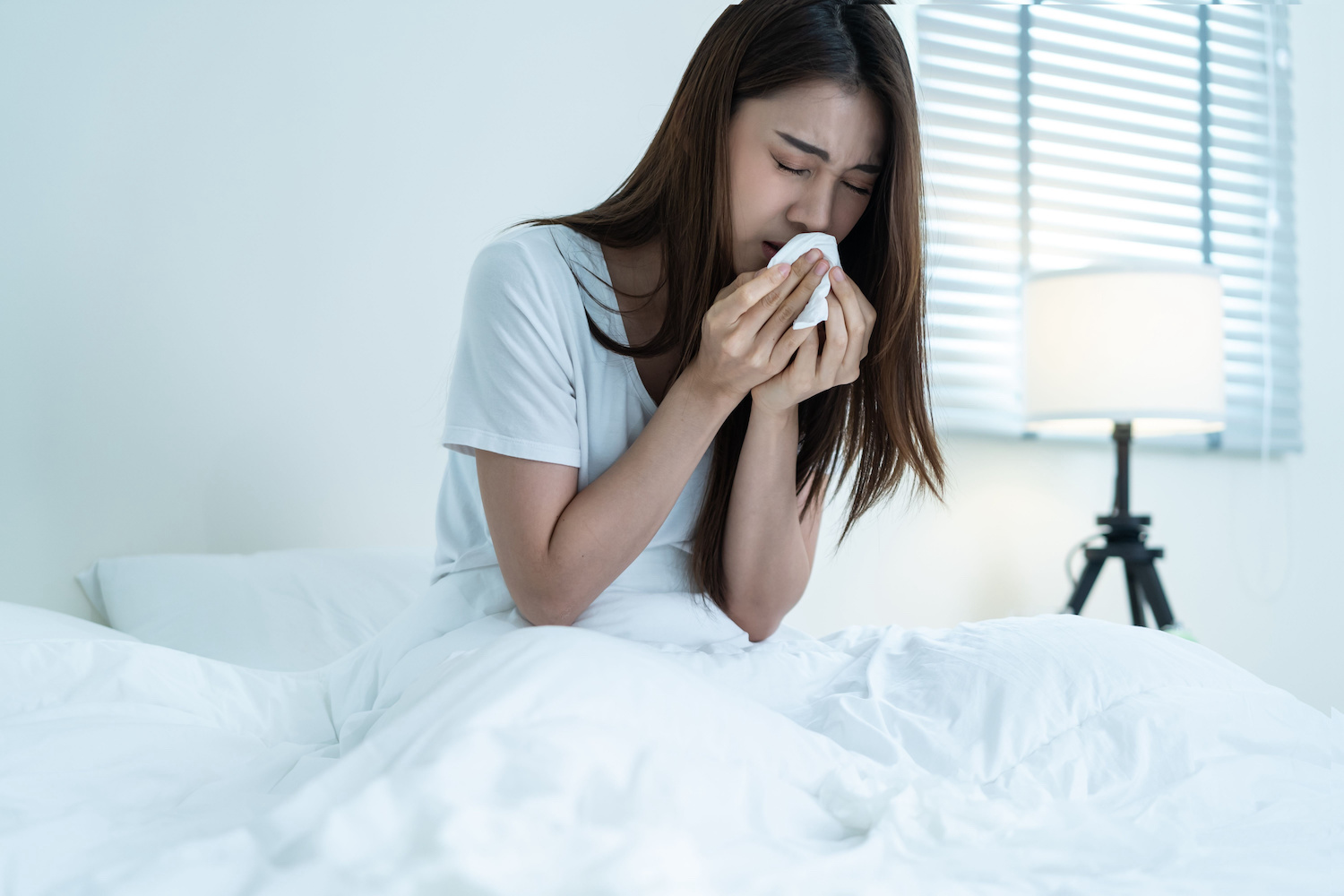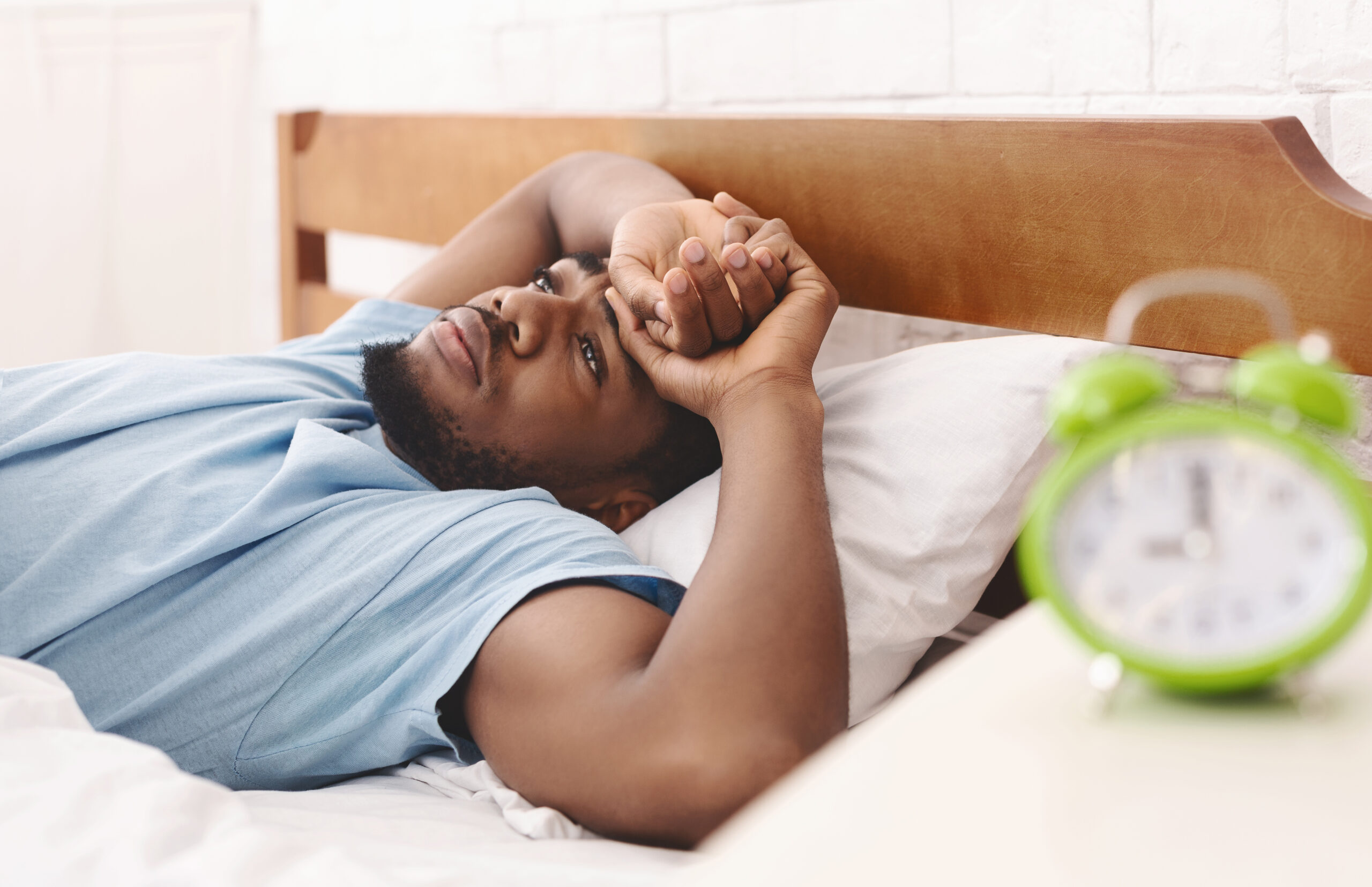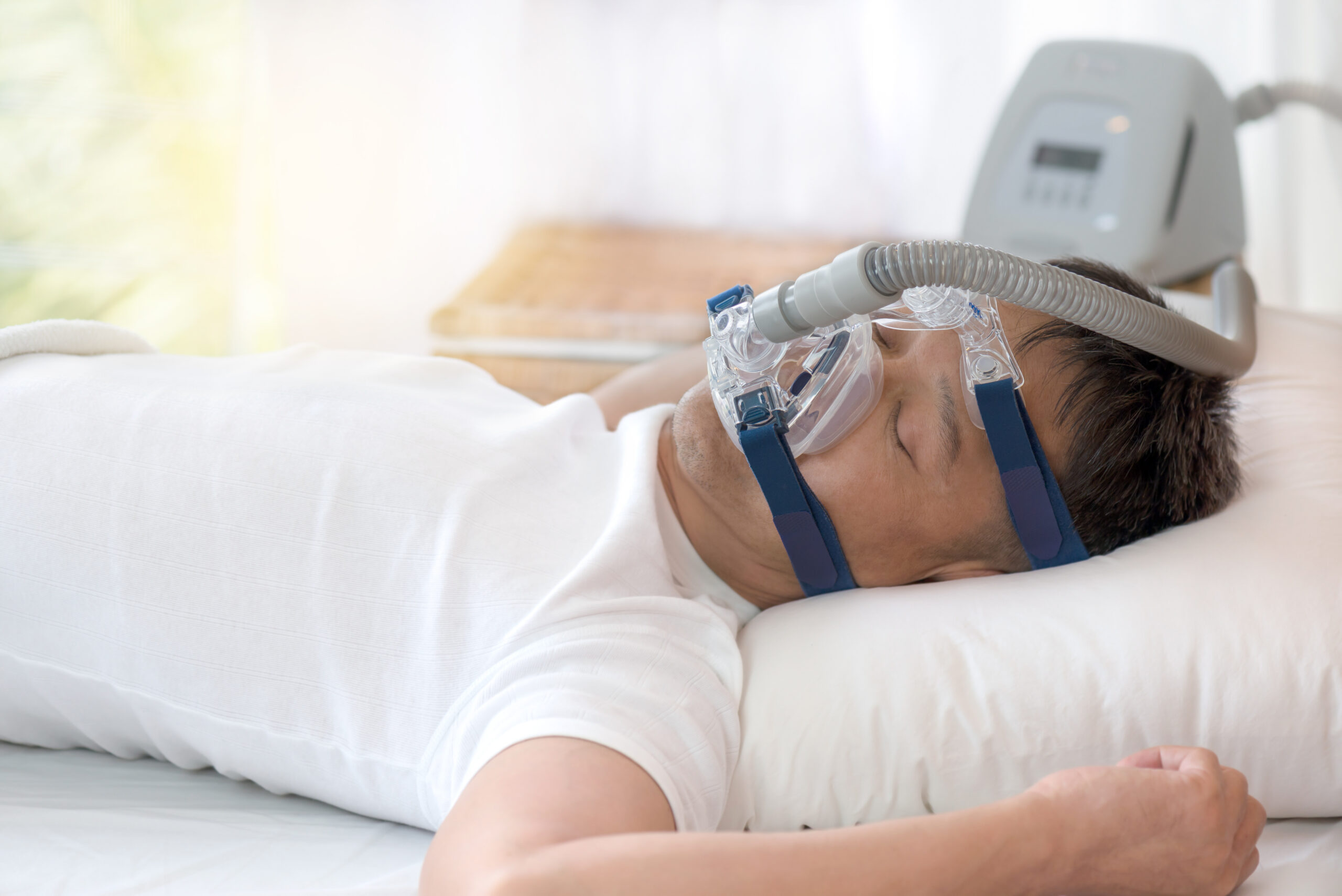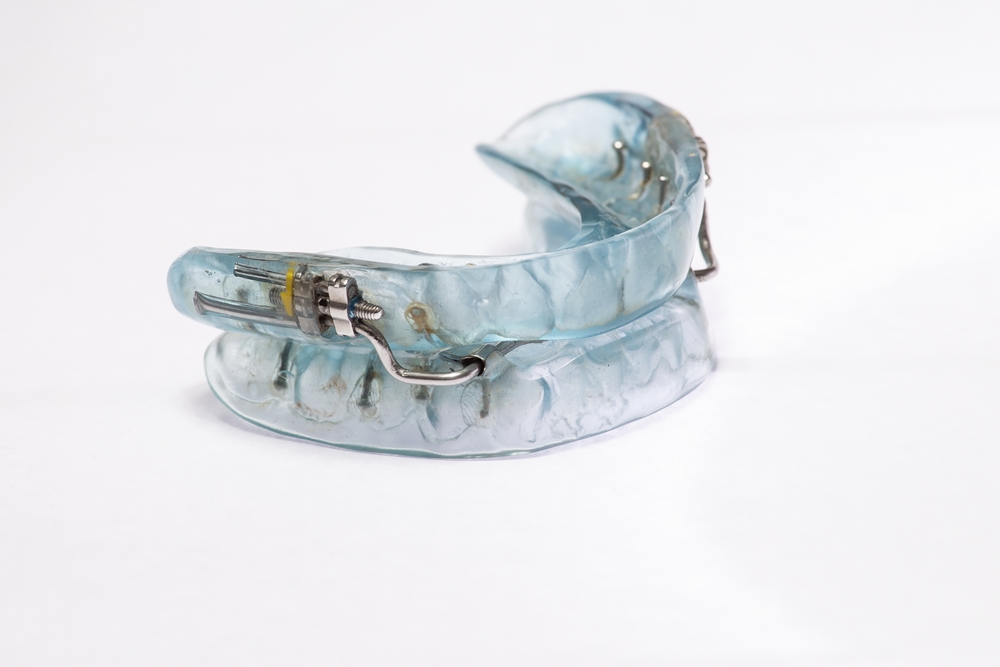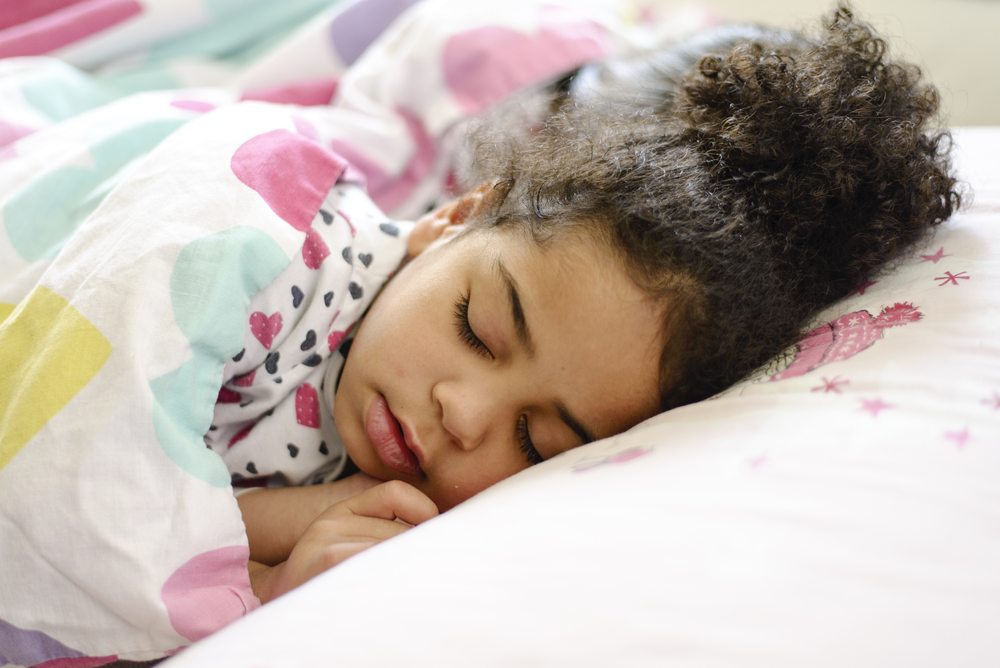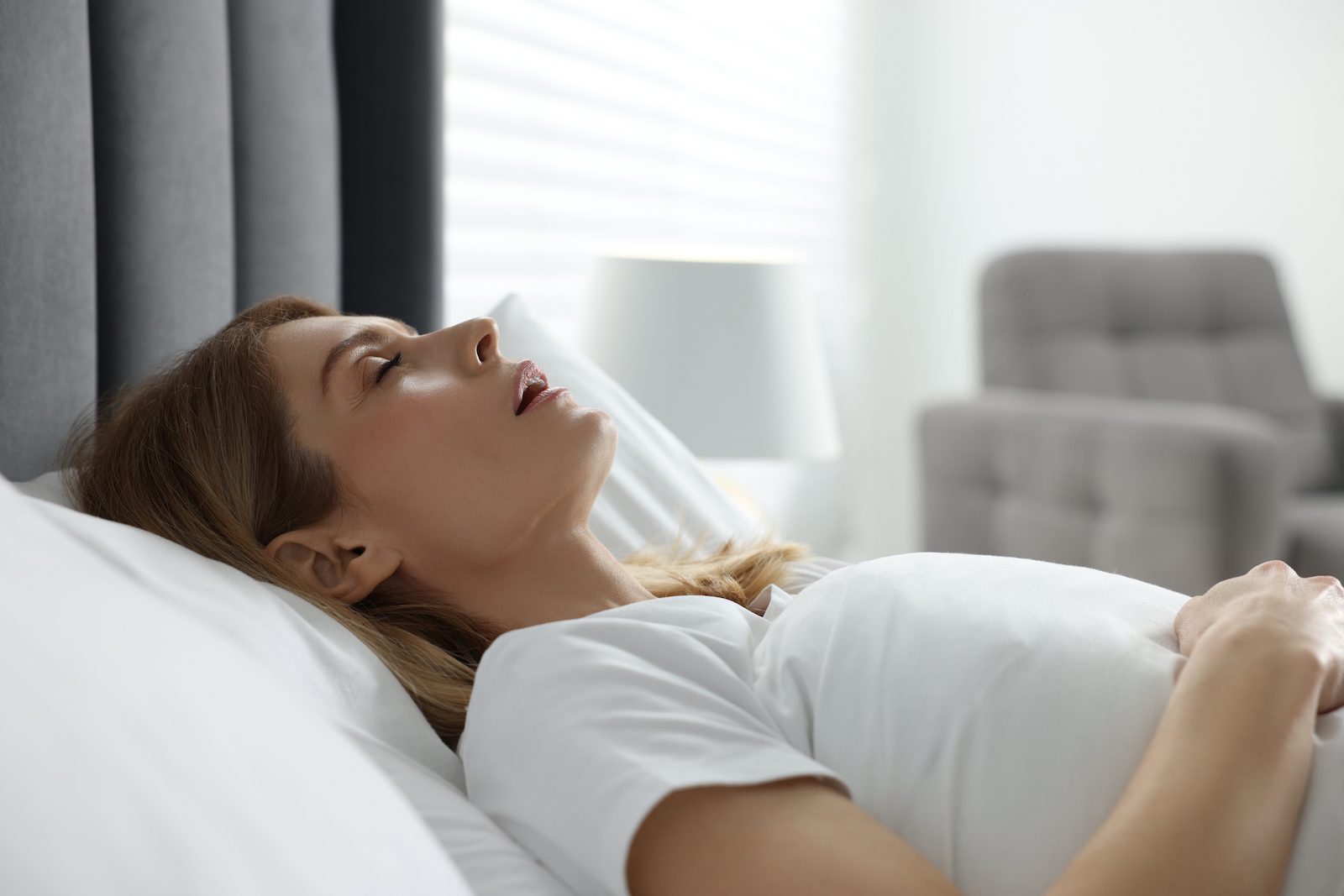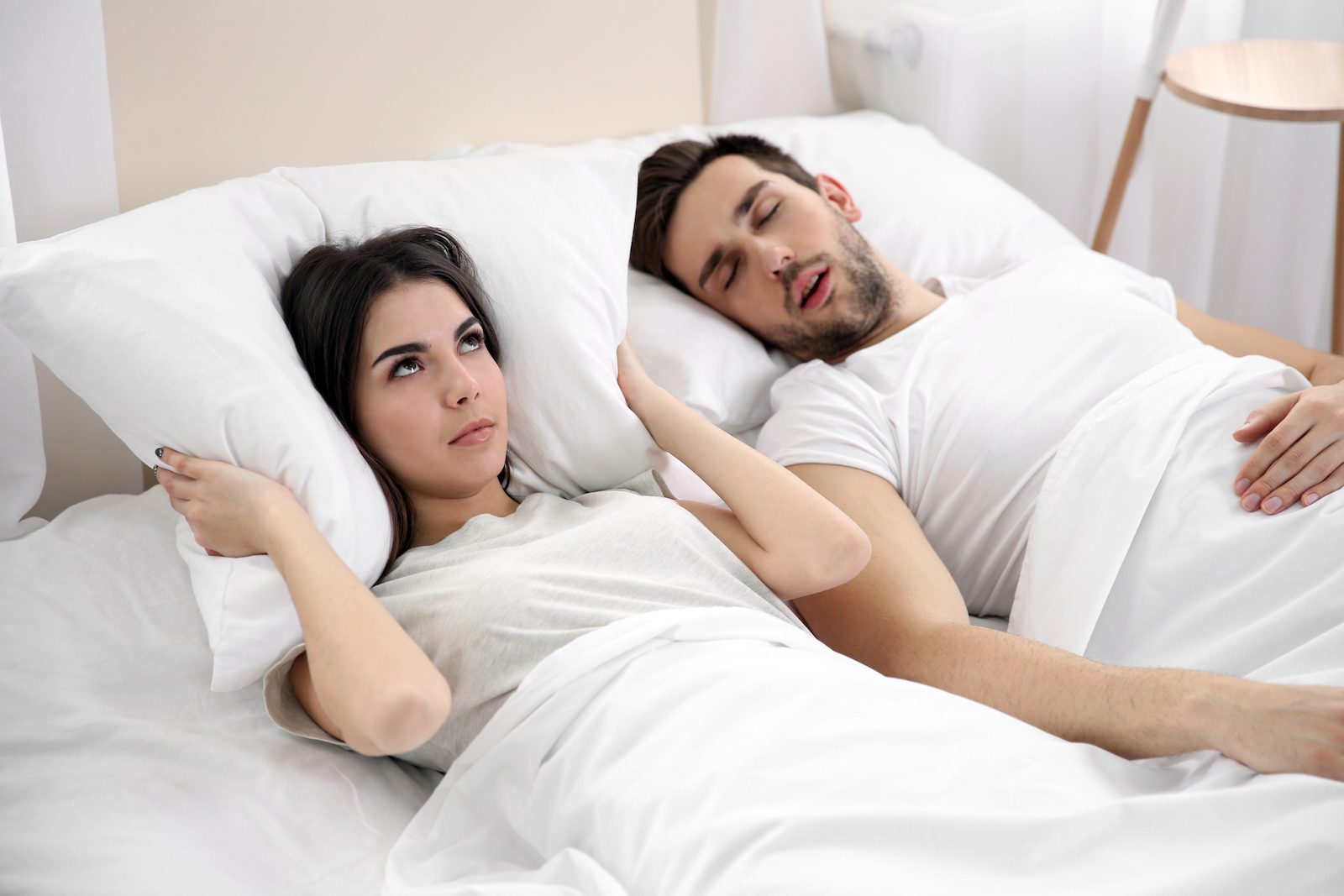Although snoring is common in people who have sleep apnea, you can definitely snore and not have sleep apnea.
Almost everyone snores once in a while, and as many as 44% of people snore on a regular basis. But snoring that is loud, frequent, and accompanied by gasping, choking, or pauses in breathing may be a sign of sleep apnea.
It is important to talk to your doctor if you are experiencing snoring, especially if there are additional symptoms that may be consistent with sleep apnea.
What Causes Snoring?
Snoring is a sound caused by the vibration of tissues in your mouth, nose, and throat. The muscles supporting these tissues become relaxed as you sleep, so air moving through to the lungs causes the tissues to vibrate, producing the sound of snoring.
If your airway becomes narrowed, then the speed of airflow over these tissues increases, which can cause more vibration and snoring. As a result, snoring is more likely if airflow through your nose or throat becomes partially blocked during sleep.
Certain factors are known to be cause snoring, including:
- Obesity
- Use of alcohol or sedative drugs
- Smoking cigarettes
- Sleeping on your back
- Nasal congestion
- Nasal polyps, which are small growths in the nose
- A bend in the wall between the nostrils
- An underactive thyroid
- Swelling of the tonsils or other tissues near the throat
What Is Sleep Apnea?
Sleep apnea is a type of sleep disorder that involve interruptions in breathing. There are two main types of sleep apnea: obstructive sleep apnea (OSA) and central sleep apnea (CSA).
OSA is much more common than CSA. OSA occurs when the tissue around the upper airway narrows, causing a reduction or stoppage in breathing. Disrupted breathing results in drops in blood oxygen levels because the air supply to the lungs is insufficient. Drops in blood oxygen or limited airflow trigger partial awakenings that interfere with quality sleep.
Partial awakenings occur to re-engage the muscles surrounding the airway and take recovery breathings. A person with obstructive sleep apnea will repeat this cycle of airway obstruction dozens to hundreds of times over the course of the sleep period.
As a symptom, snoring is primarily associated with OSA, but it may also occur in people with CSA.
Snoring vs. Sleep Apnea
Both snoring and obstructive sleep apnea involve changes to how air passes through the upper airway. It is common for people with OSA to snore. However, some people who snore do not have OSA, and not everyone with OSA snores.
In OSA, breathing stops or slows for greater than 10 seconds at a time at various points during sleep. This causes drops in blood oxygen levels, brief and partial awakenings, fragmented sleep, and daytime sleepiness, making OSA a serious sleep disorder.
It is natural to want to tell the difference between snoring and sleep apnea. Although only medical testing can definitively tell them apart, it is still helpful to know the potential signs that snoring could be linked to OSA.
It is important to note that snoring and OSA are on a spectrum, and over time a person’s snoring may evolve into OSA. This is one reason why repeat medical testing for OSA may be needed.
Indications That Snoring Might Be Sleep Apnea
You can’t tell by symptoms alone whether you have sleep apnea or how severe the condition might be. But recognizing potential signs of sleep apnea can help you know when to talk to your doctor.
Some of the most common OSA symptoms happen during sleep, so you may only be aware of them if a bed partner or roommate notices and tells you about them. These symptoms include:
- Snoring
- Pauses in breathing
- Choking or gasping for air
Other symptoms of obstructive sleep apnea can affect you when you’re awake. It’s important to be aware of these daytime signs of OSA since you are more likely to be conscious of them.
- Excessive sleepiness during the day: You may feel very sleepy during times when you expect to feel alert and may even fall asleep while doing activities like reading, driving, or watching television.
- Morning headaches: On most mornings, you may wake up with a squeezing headache. The pain is usually felt on both sides of the front of your head and may last for several hours.
- Poor concentration: You may struggle with attention or focus at work or school or when doing other daily tasks if OSA is reducing the quality of your sleep.
- High blood pressure: Many people with OSA have elevated blood pressure. While high blood pressure can be caused by other conditions, it may be a sign of OSA if it occurs alongside other symptoms.
For children with sleep apnea, the daytime symptoms may be different. Instead of feeling tired, many children with OSA are more likely to show signs of aggression, restlessness, or hyperactivity.
Long-Lasting Effects of Snoring and Sleep Apnea
Occasional snoring usually has no long-lasting effects. If you snore habitually, it may disrupt the sleep of anyone who shares a bed or room with you.
Untreated OSA can cause long-term sleeping problems that can affect concentration, memory, and decision-making. Daytime sleepiness can raise the risk of accidents. OSA also reduces the body’s oxygen levels during sleep, which over time may lead to serious health conditions such as high blood pressure, heart failure, stroke, and type 2 diabetes.
In children, untreated OSA can contribute to learning, developmental, and behavioral difficulties. Children affected by severe OSA may have impaired growth and other health consequences.
Treating Chronic Snoring
If your snoring is bothersome but not related to OSA, you may be looking for ways to try to stop snoring.
It is best to check with a doctor about what might work best for you, but some changes to habits and lifestyle may reduce snoring, such as:
- Maintaining a healthy weight
- Breathing through your nose or taking steps to open up your nasal cavity
- Reducing or eliminating alcohol consumption
- Stopping smoking
- Sleeping on your side instead of your back
- Doing specialized mouth and throat exercises
Anti-snoring mouthpieces that are custom-fitted by a dentist are designed to help keep the airway open during sleep.
If other treatments are unsuccessful, surgery for snoring may be considered. Surgical options can include removing loose tissue in the mouth or nose.
Your doctor or a sleep specialist can provide more information on these treatment options and their benefits and drawbacks in your situation.
CPAP Therapy for Obstructive Sleep Apnea
Continuous positive airway pressure (CPAP) therapy can effectively treat both snoring and sleep apnea.
With CPAP therapy, filtered and pressurized air is pumped from a machine, through a mask, and into your airway while you sleep. The air pressure supports your airway in an open position so you can breathe normally, maintain normal and stable blood oxygen levels, and have higher-quality sleep. Treatment with CPAP is a first-line treatment for people with OSA, particularly if OSA is moderate or severe.
A CPAP device is only available with a prescription. While most insurance policies cover at least some of the cost of CPAP therapy if it is used to treat sleep apnea, they typically do not provide coverage if CPAP is used to treat snoring alone.
When to Talk to Your Doctor About Snoring
Talk with your doctor if you experience any of the following potential warning signs of sleep apnea:
- Snoring on a regular basis
- Breathing difficulties when you sleep
- Waking up unrefreshed even after sleeping at least seven hours
- Needing 9 or more hours of sleep to feel rested
- Regular morning headaches
- Obesity or rapid weight gain
- Problems with concentration or memory
- Uncontrolled medical conditions, such as high blood pressure, diabetes, heart problems, or neurological conditions.
- Difficulty staying awake at work or school or during other times during the day
The only definite way to tell the difference between snoring and snoring caused by sleep apnea is to have diagnostic testing. This can involve going to a clinic for a sleep study or, in some cases, taking a home sleep apnea test.
During a sleep study and a home sleep apnea test, devices monitor your breathing patterns, oxygen levels, heart rhythms, and other bodily systems while you sleep. This data can be used to determine whether you have sleep apnea.
If your doctor thinks testing is necessary, they can recommend the best type of testing for you. When results are available, the doctor can tell you whether your snoring is linked to OSA. If you do have OSA, they can review your options for OSA treatment. If you don’t have OSA they may still discuss steps you can take to reduce snoring.





